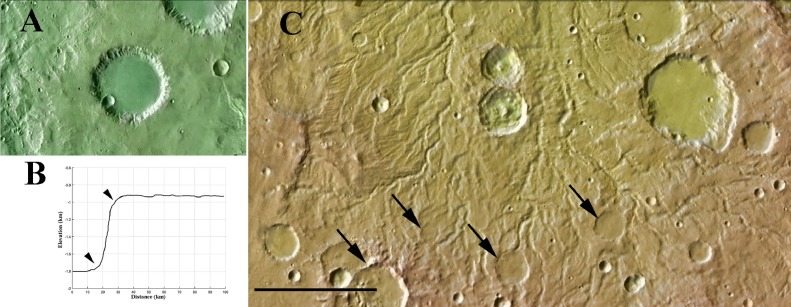Mars is a cold, arid world with a thin atmosphere, but that wasn’t always so. In its youth Mars was wet with rivers and oceans. Presumably that also means young Mars had rainfall. But how much did it rain on Mars? New research proves not only did it rain on Mars, the rains were strong enough to shape the planet’s surface.
To study Martian rain, two geologists used the same rainfall models used for Earth. These are well studied, and are proven to work well. But there are differences between Earth and early Mars. One big difference is that gravity on Mars is about a third that on Earth, meaning that water droplets would fall more slowly and strike the surface with less energy. Then there is the fact that the atmosphere of Mars has changed significantly. Young Mars had an atmosphere four times thicker than modern Earth.
Because of these factors, there wasn’t much rain on Mars despite plenty of liquid water. Instead water vapor would tend to coalesce into small droplets to form a thick fog. This fog could make the surface of mars wet, but wouldn’t alter the terrain much. As the atmosphere of Mars thinned to a pressure similar to Earth’s, larger water droplets could form. Given the low gravity, could merge into quite large rain drops. On Earth large raindrops tend to break apart as they fall faster, which limits their size to about 6 millimeters in diameter. Falling at a slower speed, Martian water droplets could grow to about 7.5 millimeters. Torrential rains with large rain droplets created surface runoff that cut paths on the surface of Mars. These “gully washers” can be seen today, such as in the image above.
Paper: Robert A. Craddock and Ralph D. Lorenz. The changing nature of rainfall during the early history of Mars. Icarus, volume 293, (September 2017).












Comments
Four billion years ago, the sun ought to have been cooler and less bright. That’s not terribly consistent with liquid water on Mars at that time. You could argue that Mars had an atmosphere that trapped enough heat, but really? There’s a lot of mystery here.
No, there is only mystery if you don’t understand the science. Of course Mars had a thicker atmosphere in the past. It would have still retained much of the heat from its formation. Much of that would have been expressed as volcanism. Volcanism = lots of CO2 and H2O (greenhouse gases) in the atmosphere. So, the solar output being ~30% lower at 4.5Ga, pales into insignificance besides that. Unfortunately, Mars cooled down relatively quickly. It’s smaller than Earth. Surface area to volume ratio. So, I’m struggling to see what the undefined ‘mystery’ is here.
I long the days when the first amendment didn’t mean that every idiot could open their mouths and be celebrated as a worthy thinker… You know, the first requisite for a scientific education is the recognition that scientific sense begins with common sense. Which tells me that conclusions drawn from an incompletely defined universe, are just entertainment. Before wasting the time guessing how the Mars geology and geography was achieved, try getting an in-depth understanding on Mars morphology. The times to disabuse freshmen ideas is long gone. Prior learning and common sense are pre-requisites for this class…
You appear to have just put words on a string there. They don’t actually make any sense. Care to be more specific?